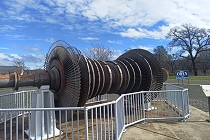 „Renewable Resilience: City-Scale Geothermal Energy Everywhere” is a research network operating since 2023 under the terms of the John Wesley Powell Center for Analysis and Synthesis, which is a part of the United States Geological Survey (USGS). Activities of the network are related to low-temperature geothermal energy and various underground geothermal energy storage systems.
„Renewable Resilience: City-Scale Geothermal Energy Everywhere” is a research network operating since 2023 under the terms of the John Wesley Powell Center for Analysis and Synthesis, which is a part of the United States Geological Survey (USGS). Activities of the network are related to low-temperature geothermal energy and various underground geothermal energy storage systems.
The research network includes institutions from such countries, as Austria, Greece, Colombia, the Netherlands, Germany, Poland, and the US, including geological surveys, government agencies, academia, and private sector companies. PGI-NRI is represented by Maciej Kłonowski and Mateusz Żeruń. The annual meeting in 2024 began with a study visit to the Geysers Geothermal Field (the Geysers) geothermal power plant, which is the largest of its kind in the world. The Geysers is a complex of 13 power plants with a total installed capacity of 725 MW, operated by a company called Calpine. Electricity production uses steam extracted from a depth of about 1,600 metres through more than 300 directional production wells. The boreholes extract steam from fractured and thermally altered greywackes covered with a thick overburden of greenschists, serpentinites, greywackes, and limestones forming a caprock. The source of heat is a young granitoid intrusion occurring below the greywackes. To maintain reservoir pressure at a constant level and to intensify steam production, water is injected into the graywackes.
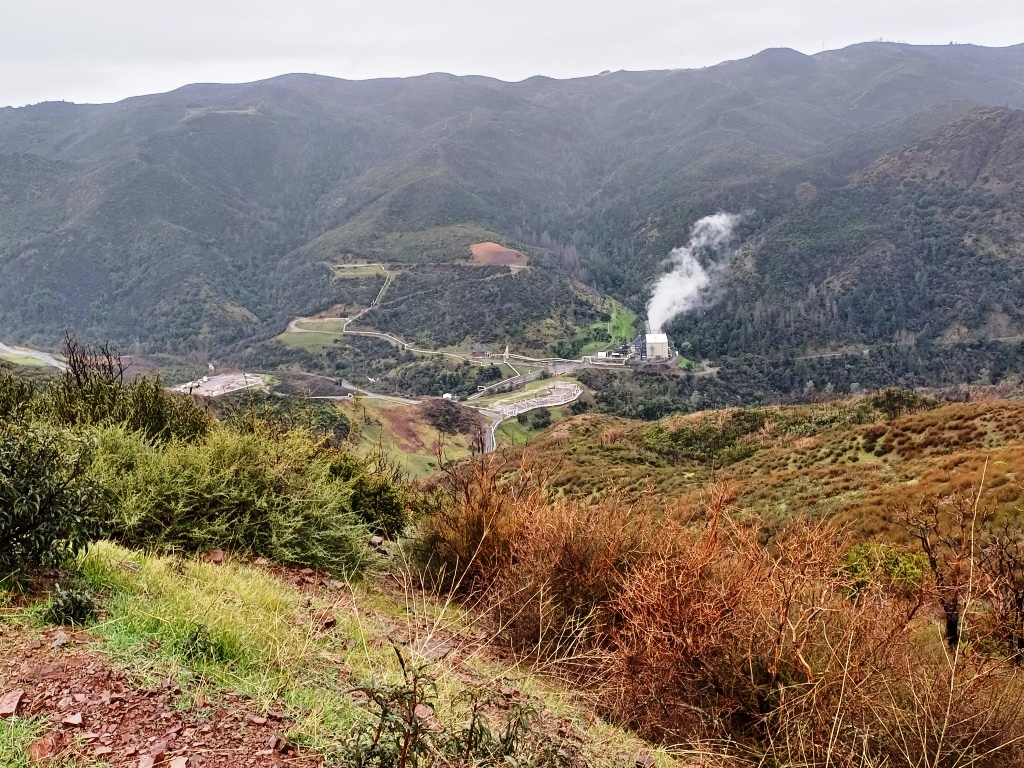
A view of one of the geothermal power plants in the complex of the Geysers Geothermal Field
The visit to the power plant began at the tour centre, where experts from the Calpine company explained the geological structure and hydrogeological conditions of this unique site, as well as the technology used to exploit steam, inject water, and produce electricity. Participants also visited the educational exhibition at the centre. Thereafter, despite the heavy rain, everyone headed out into the field to see selected elements of the power plant, occurrences of fumaroles, and rock outcrops.
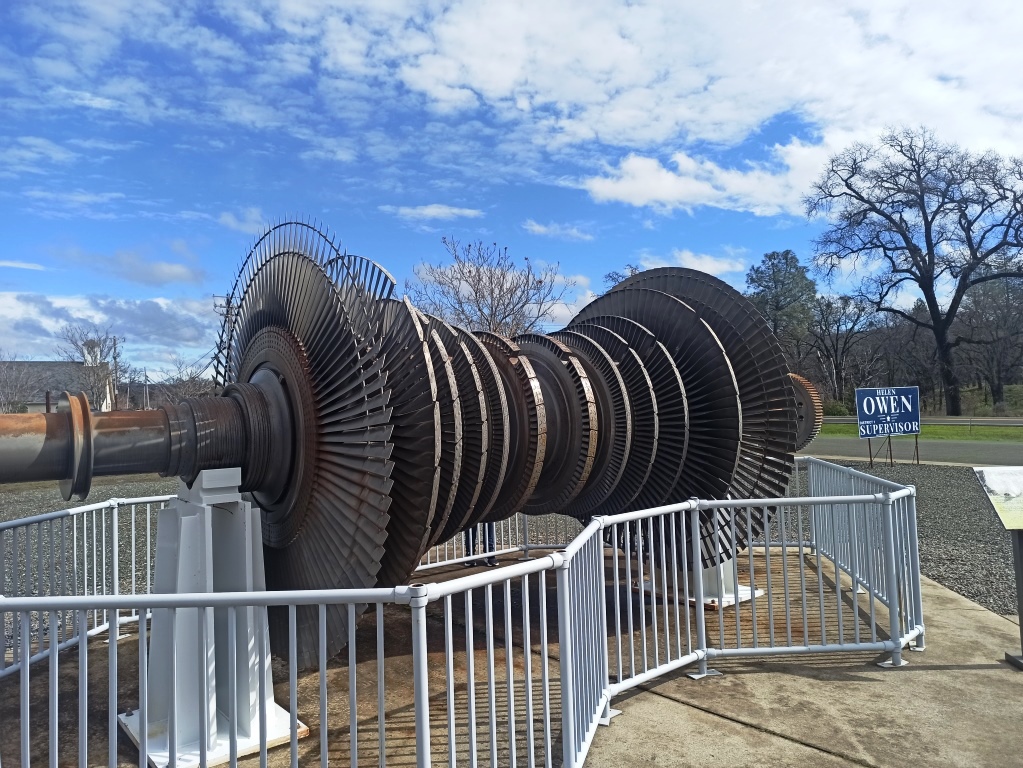
Power turbine on display in front of tour centre
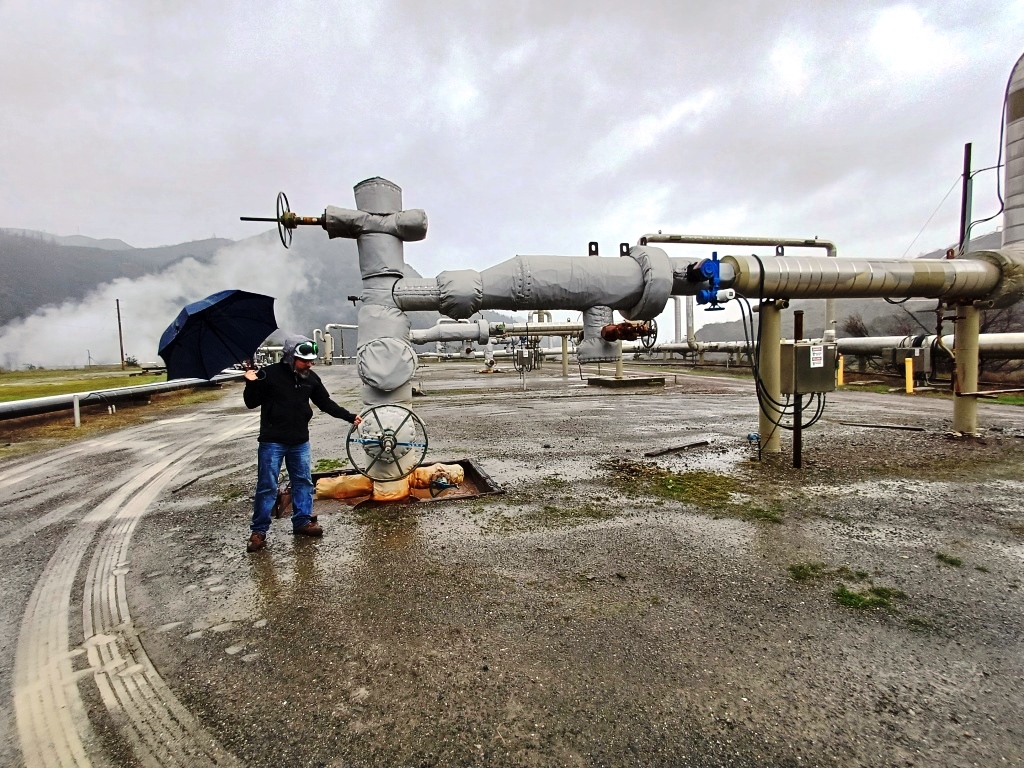
Production well head
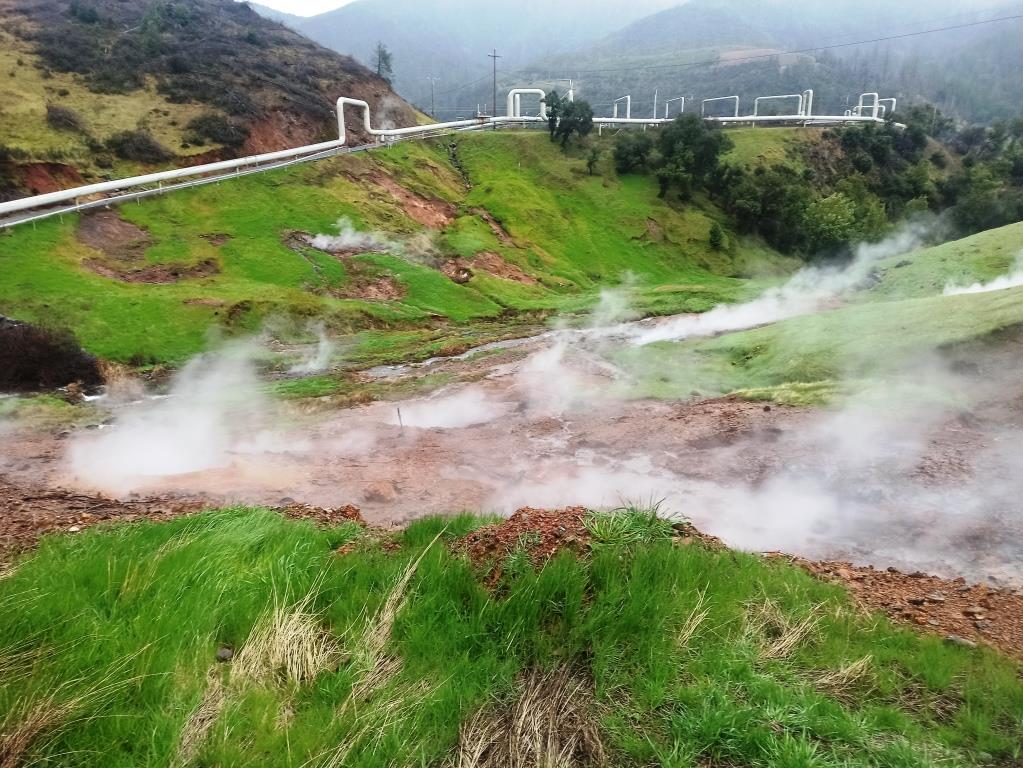
Fumaroles
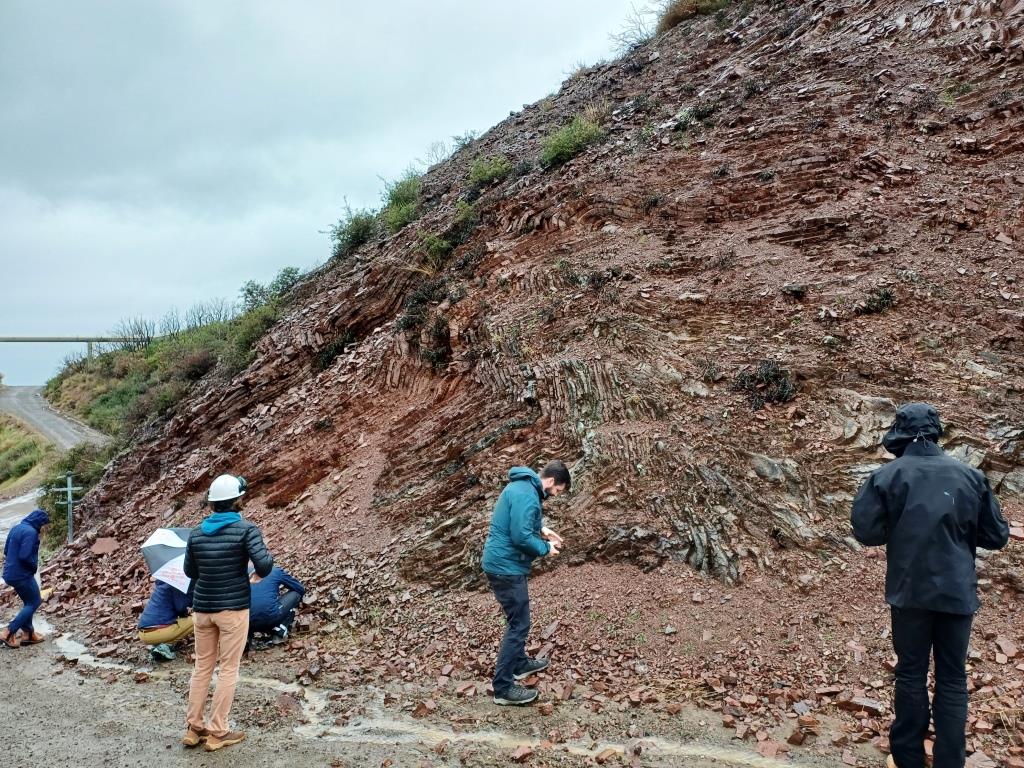
Outcrop of radiolarian limestones
During the following days of the meeting, which took place at the USGS headquarters in Moffett Field, network participants worked together to prepare the outcomes planned for 2024, including a glossary of scientific terms with infographics and decision support tools for low-temperature geothermal investments. The development of joint materials on low-temperature geothermal energy in selected urban areas around the world, classification of underground thermal energy storage systems, and mapping and assessment of low-temperature geothermal resources around the world have also begun.
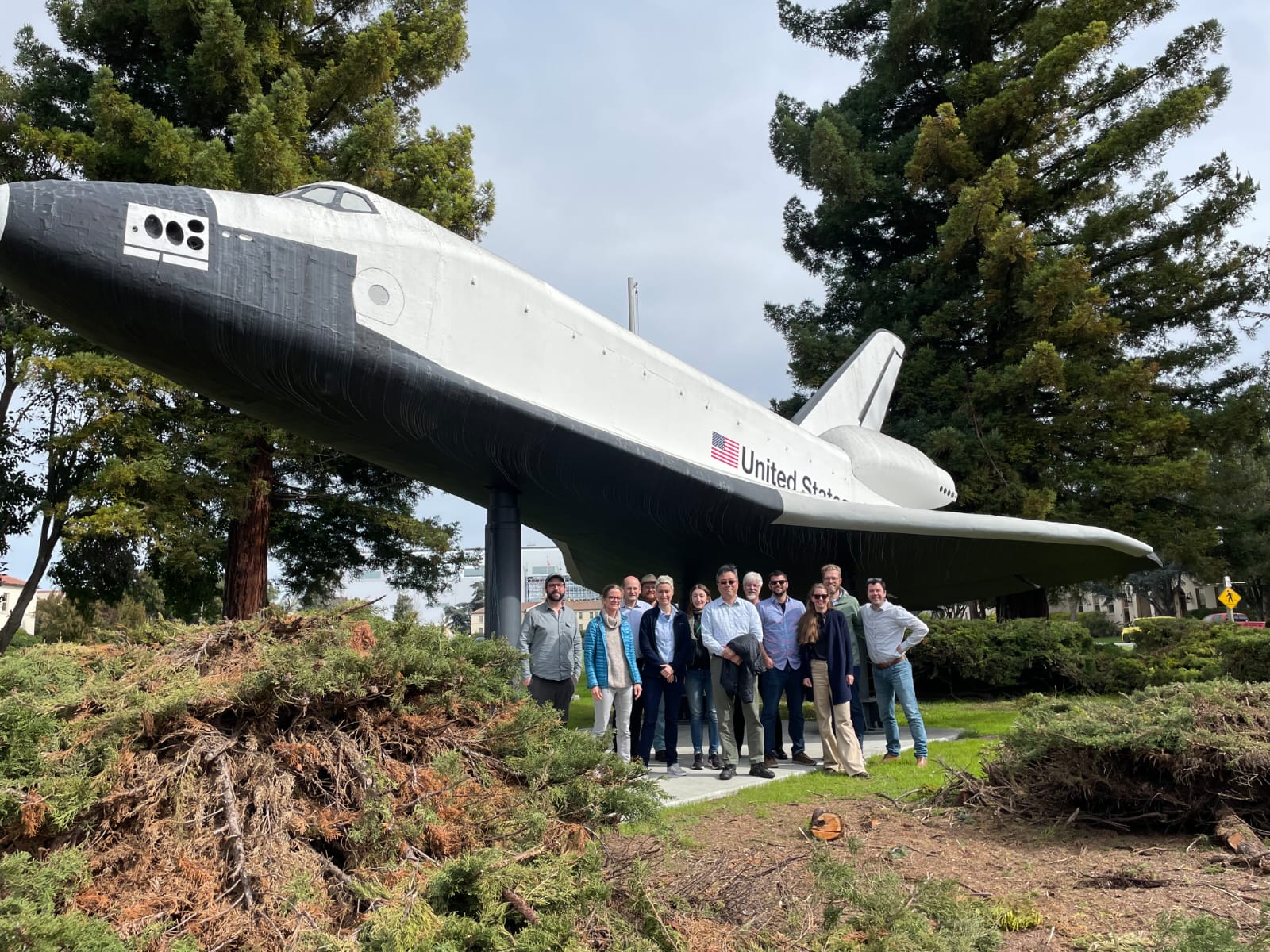
Participants of the meeting in front of a model of the space shuttle at the entrance to the USGS headquarters in Moffett Field
For more information on the network, visit the Powell Center, USGS:
Renewable Resilience: City-Scale Geothermal Energy Everywhere | U.S. Geological Survey (usgs.gov)
and a paper published in the 48th Workshop on Geothermal Reservoir Engineering.
The "Renewable Resilience: City-Scale Geothermal Energy Everywhere" research network activities are funded by the John Wesley Powell Center for Analysis and Synthesis, a unit of the United States Geological Survey.
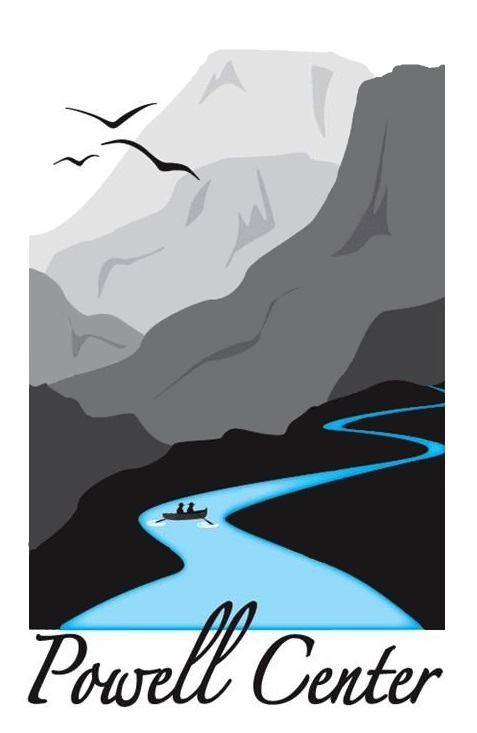
Text and photos: Maciej Kłonowski, Mateusz Żeruń














 PGI-NRI offer
PGI-NRI offer Mineral resources of Poland
Mineral resources of Poland  Oil and Gas in Poland
Oil and Gas in Poland 




 Subscribe to RSS Feed
Subscribe to RSS Feed